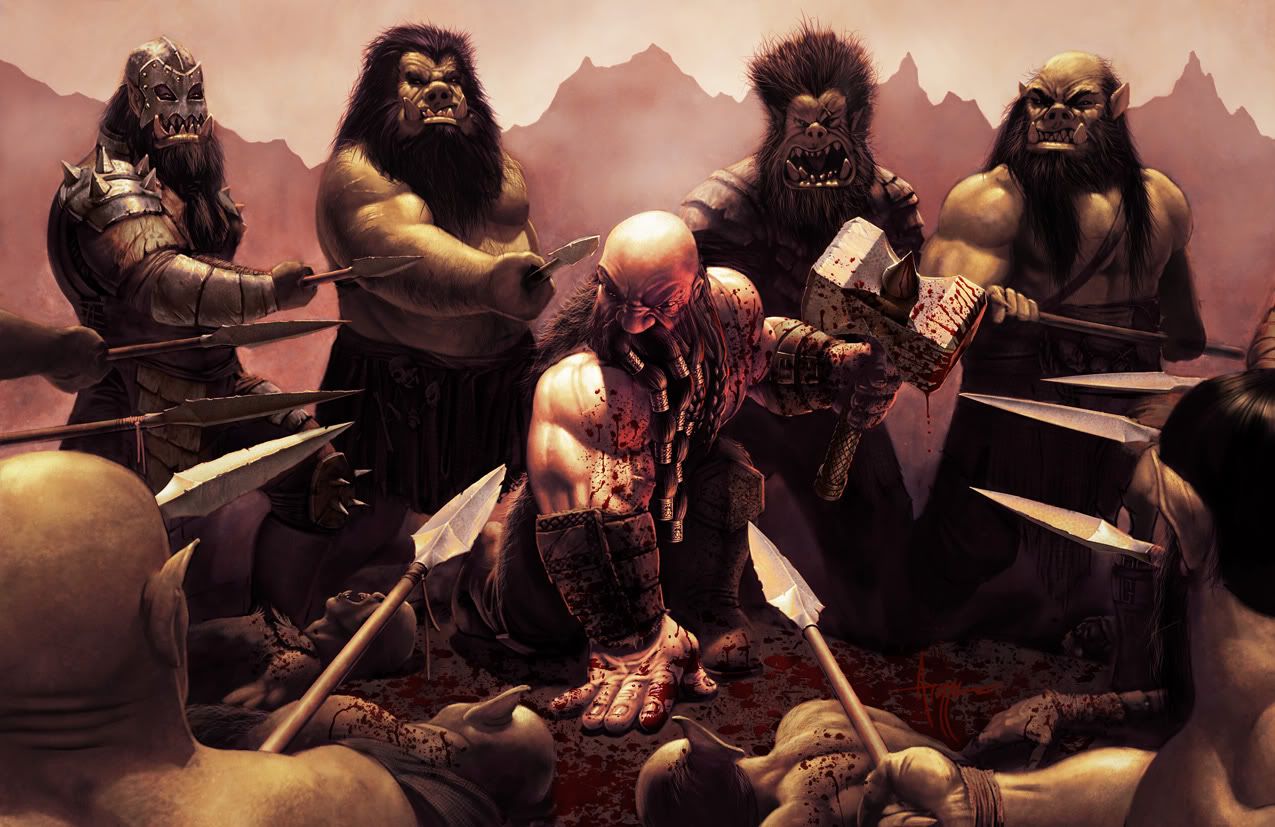Phaezen
First Post
There you go then. You answer your own question as to how it could be done in older editions and didn't require some video game power to do it.
Notice yourself using a "taunt" ability that is a racial for Kender, but doesn't discount other races or even classes from doing something to piss off the enemy to rush him, or the enemy leader to order them all to rush him.
So the power isn't need to do it.
Explain to me why you can only swing your sword at more than one enemy in this sweeping motion once per encounter in 4th and that make sense?
Because you ran out of use of the power right? So it is ok to be "like the movie where it has to happen" as mentioned by M_R, but you can only do it once, because a fighter is so inept at being able to do something more than once.
I call that a lack of options.
DM: Sorry Tom, you can't make anymore wild swings at the enemies hoping to hit more than one at a time because you used up your encounter power.
Isn't it great to play in a movie script where the director (DM/rules) dictate (railroad) you actions and choices?
I see it more of a narative tool than a "video game power". It also works in line with my experience of fighting (JKA Kumite and Goju Ryu Iri Kumi). Some techniques are more difficult to complete and require the right distance, body positioning, balance and openings in your opponents defense to execute.
So for example, basic jabs, snap kicks and mawashigeri (roundhouse kicks) to the body would be my at will attacks, very little effect but they are easy to execute and are used to position your opponent for your more effective techniques.
For encounter techniques, more difficult you need the right balance and have to work openings in your opponents defence, you will most likely only be able to pull these off once or twice in a three minute bout. You are looking at head high mawashigeri's, reverse mawashi to the body, using strong defenses to turn your opponent and open his back, as well as small sweeps to put him off balance so you can land other techniques easier.
For Dailies, requiring perfect balance, positioning as well as working your opponent into a position where his balance and defences are not in place to counter, full sweeps and throws, are the big ones here. Unless you are very skilled you will most likely be able to execute these once a tournament (usually 4 or 5 fights).
Similarly, for martial exploits you can draw the same conclusions, your encounter powers require a certain set of circumstances that you can manoeuvre into once in a fight. Dailies, require even more skill to set up and you can usually manage to get the right circumstances once every 4 or 5 encounters.
Phaezen


